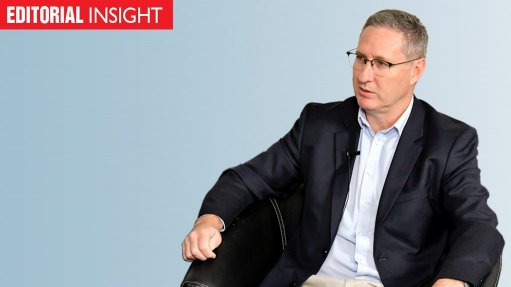
There will be some criticism and disappointment that South Africa’s draft updated Nationally Determined Contribution (NDC) unveiled by Forestry, Fisheries and the Environment Minister Barbara Creecy on March 30 is not aligned to an outcome that is premised on net-zero emissions by 2050.
Several large economies have already made the net-zero leap ahead of the upcoming Glasgow climate talks, including those with far less potent renewables resources, which will make their transitions more expensive than South Africa’s. Fast-growing China has made a 2060 commitment, despite having a number of relatively youthful coal plants in its fleet.
By contrast, South Africa is in a relative energy transition ‘sweet spot’. Its coal fleet, besides Medupi and Kusile, is old and much of it will be decommissioned over the coming 20 years with little or no stranded-asset risk. The country’s combined solar and wind resources can now be exploited more cheaply than the fossil alternatives, which will increasingly play the role of system stabilisers until fossil-free solutions are integrated over the coming few decades.
Nevertheless, as Creecy herself acknowledged, South Africa is not there yet, arguing that the NDC cannot be “aspirational”. The 30-page document, therefore, contains commitments to reducing the country’s greenhouse-gas (GHG) emissions by 2030 at a quicker pace than that outlined in its current pledge, lodged in October 2015. However, it is not overly ambitious in this area either.
Specifically, it proposes a GHG emissions range in 2025 of 398-million tonnes (Mt) of carbon dioxide equivalent units (CO2-eq) to 510 Mt CO2-eq, and a range from 398 Mt to 440 Mt CO2-eq in 2030. This represents a 17% and 28% reduction in the upper end of the target range in 2025 and 2030 respectively – the upper end was previously set at 614 Mt CO2-eq.
In the areas of adaptation and climate finance, however, the NDC shows far more ambition, even aspiration.
Its adaptation communication focuses on enabling support for key sectors that will be affected by the impacts of climate change, including human settlements, agriculture, water and energy.
In addition, five adaptation goals are outlined, including a goal of mobilising funding for adaptation implementation through multilateral funding mechanisms. In fact, South Africa uses the NDC to reinforce the expectation that developed countries continue to provide and mobilise climate finance to support country-driven strategies in line with Article 9 of the Paris Agreement, which specifies that there should be support for mitigation and adaptation measures taken by developing countries.
The draft NDC states that South Africa received $4.9-billion in climate finance in 2018 and 2019, or around $2.4-billion a year, mostly in the form of loans and mostly to support mitigation projects.
South Africa’s key goal, though, is to access significantly higher levels of climate finance during the periods of implementation of the first NDC, accessing a total of $4.5-billion a year from multilateral and bilateral sources by 2025, and a total of $8-billion a year by 2030, equally distributed between adaptation and mitigation.